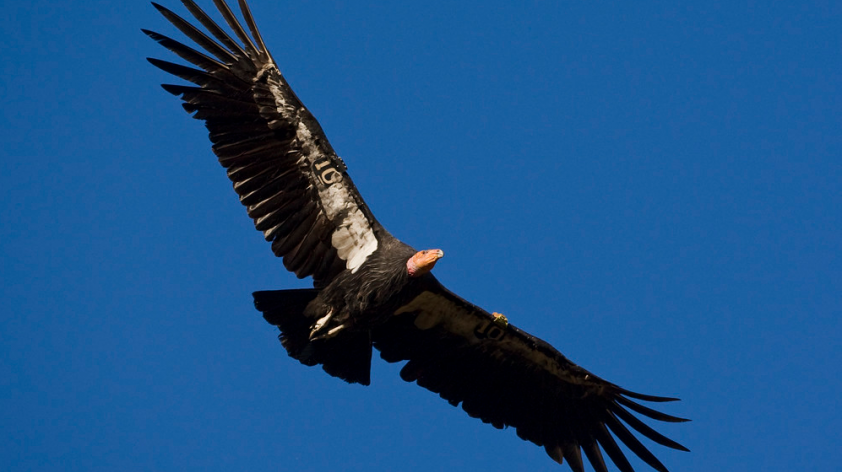
Big Bird, Even Bigger Dilemma
My story begins with a bird. The largest bird in North America in fact. The California condor, which once spread its massive wings over most of the southern portion of the country, unfortunately now is only found in pocket populations along the West Coast and in Northern Mexico.
California condors only produce one egg about every two years and it takes many years before they are even old enough to begin laying eggs. As a result, population declines exacerbated by threats such as lead poisoning from bullets in their prey, micro-trash ingestion, and even hunting of the birds themselves, have led to the condor’s listing as Critically Endangered by the IUCN. In the 1980’s, only 22 birds remained in the wild.
These devastatingly low numbers led conservation scientists to make the difficult decision to remove the last of those birds from the wild in order to establish a captive breeding program with hopes of eventually reestablishing the wild populations in the future. Reintroduction efforts began in 1992 and San Diego Zoo Global is one of the 6 institutions that work on the condor breeding and reintroduction efforts. Currently, the population of wild (free flying) California condors sits at just over 290 individuals, thanks to the tireless work of these institutions. This successful breeding program is owed to the countless hours that researchers and keepers have put into maintaining the genetic diversity from the limited number of birds available. It is crucial for researchers to know the genetic and family history of each bird in order to ensure that unrelated birds are being paired. This helps reduce the incidences of mutations and lessens the risk of genetic health issues as much as possible.
In an effort to educate students about the dire situation of the condors and the success of the California Condor Recovery Program, the Community Engagement team at the San Diego Zoo Institute for Conservation Research created a lesson plan centered around the complexity of the genetics involved in the species’ recovery efforts. It was this lesson plan that inspired my Independent Study as part of my Master’s degree program through the Advanced Inquiry Program at Miami University and San Diego Zoo Global.
The story of the California condor and its recovery from the brink of extinction, is one that needs to be told. To expand upon the single condor genetics lesson offered at the Institute, I collaborated with Kimberly Kutina, Conservation Laboratory Manager, to create a five-week long storyline that aims to tell the condor’s tale. This storyline is aligned with the Next Generation Science Standards and covers several biology topics including animal behavior, DNA, genetics, ecology, and conservation science.
The storyline uses a video to introduce to students the threats faced by the condors, as well as their Species Recovery Plan, and serves as the central anchoring phenomenon for the unit. Teachers then can follow the day-by-day guide through each topic that should be introduced and through the respective transitions from the day before. Altogether, the unit includes three lesson plans, complete with the applicable Next Generation Science Standards, that are easily adaptable to all classrooms regardless of access to materials. My goal is that teachers can easily use this storyline and its associated materials in their classroom to tell the complete story of the California condor while still covering some of the essential standards and skills required by the NGSS. It is my hope that another graduate student will continue my work in a future project and further develop more of the lessons and eventually even create a summative assessment for the unit.
Through my time working with the Institute for Conservation Research I learned so much about the California condor, as well as about teaching strategies and practices that I will take with me moving forward. I look forward to using the storyline in my own classroom and bringing my students to the Institute to participate in this fantastic California condor module with the Community Engagement team!
Courtney Goode, AIP Graduate, Miami University and San Diego Zoo Global.













